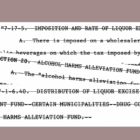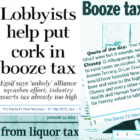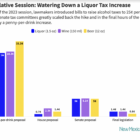Ethics
NM In Depth editors and reporters discuss 2024 legislative session outcomes
|
New Mexico In Depth reporter Bella Davis joined Executive Director Trip Jennings and Managing Editor Marjorie Childress on Tuesday for a chat about the 2024 legislative session, which ended Feb. 15.
Childress began by reminding everyone that all bills passed by the Legislature are still subject to vetoes from Gov. Michelle Lujan Grisham. Jennings added that the $10.2 billion dollar state budget and $1 billion dollar capital outlay legislation are subject to line item vetoes. That’s because they appropriate money and the state constitution gives a governor the power to eliminate words, passages and individual appropriations in any bill that spends state money.
The audience asked what New Mexico In Depth was least happy about coming out of the session. “I’m upset that I don’t know more about how much money lobbyists spend on lawmakers,” Jennings said.









